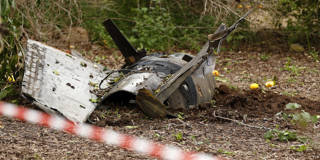After seven years of bloodletting, the conflict in Syria has become not just more complicated, but also far more dangerous for the Middle East – and for Europe. Recent Israeli strikes at Iranian positions in southern Syria, in particular, indicate the urgent need for diplomatic intervention, before it is too late.
BERLIN – The ongoing conflict in Syria has much in common with the Thirty Years’ War, which devastated the heart of Europe – particularly the German city of Magdeburg, the Aleppo of the time – from 1618 to 1648. Viewed from a distance, the war was a succession of conflicts that visited immeasurable suffering upon Europe’s population, ending, with the Peace of Westphalia, only when all of the parties involved had become utterly exhausted.
The Thirty Years’ War was nominally a religious conflict between Catholic and Protestant Christians, just as the main divide in today’s Middle East is between Sunni and Shia Muslims. But, as in Syria today, religion masked a deeper struggle for power and regional dominance.
The Syrian war started during the Arab Spring, after Syrian protesters called for democracy and an end to President Bashar al-Assad’s dictatorship. But it soon became an international affair. Iran and Hezbollah, the Lebanese Shia militia it supports, along with Russia, intervened militarily and prevented Assad’s fall to rebel forces, which were backed by Turkey and Saudi Arabia, representing the Sunni side of the divide.

BERLIN – The ongoing conflict in Syria has much in common with the Thirty Years’ War, which devastated the heart of Europe – particularly the German city of Magdeburg, the Aleppo of the time – from 1618 to 1648. Viewed from a distance, the war was a succession of conflicts that visited immeasurable suffering upon Europe’s population, ending, with the Peace of Westphalia, only when all of the parties involved had become utterly exhausted.
The Thirty Years’ War was nominally a religious conflict between Catholic and Protestant Christians, just as the main divide in today’s Middle East is between Sunni and Shia Muslims. But, as in Syria today, religion masked a deeper struggle for power and regional dominance.
The Syrian war started during the Arab Spring, after Syrian protesters called for democracy and an end to President Bashar al-Assad’s dictatorship. But it soon became an international affair. Iran and Hezbollah, the Lebanese Shia militia it supports, along with Russia, intervened militarily and prevented Assad’s fall to rebel forces, which were backed by Turkey and Saudi Arabia, representing the Sunni side of the divide.